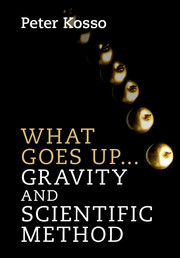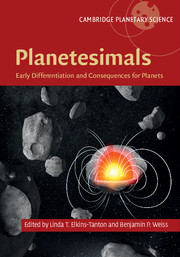Refine listing
Actions for selected content:
17002 results
5 - Entropy and the Equation of State
-
- Book:
- Foundations of High-Energy-Density Physics
- Published online:
- 06 April 2017
- Print publication:
- 10 March 2017, pp 185-250
-
- Chapter
- Export citation
3 - Fundamental Microphysics of Ionized Gases
-
- Book:
- Foundations of High-Energy-Density Physics
- Published online:
- 06 April 2017
- Print publication:
- 10 March 2017, pp 27-121
-
- Chapter
- Export citation
1 - Introduction
-
- Book:
- Foundations of High-Energy-Density Physics
- Published online:
- 06 April 2017
- Print publication:
- 10 March 2017, pp 1-8
-
- Chapter
-
- You have access
- HTML
- Export citation
Contents
-
- Book:
- Foundations of High-Energy-Density Physics
- Published online:
- 06 April 2017
- Print publication:
- 10 March 2017, pp v-xii
-
- Chapter
- Export citation
7 - Thermal Energy Transport
-
- Book:
- Foundations of High-Energy-Density Physics
- Published online:
- 06 April 2017
- Print publication:
- 10 March 2017, pp 344-390
-
- Chapter
- Export citation
Preface
-
- Book:
- Foundations of High-Energy-Density Physics
- Published online:
- 06 April 2017
- Print publication:
- 10 March 2017, pp xiii-xiv
-
- Chapter
- Export citation
9 - Transition Rates and Optical Coefficients
-
- Book:
- Foundations of High-Energy-Density Physics
- Published online:
- 06 April 2017
- Print publication:
- 10 March 2017, pp 460-507
-
- Chapter
- Export citation
2 - Characteristics of High-Energy-Density Matter
-
- Book:
- Foundations of High-Energy-Density Physics
- Published online:
- 06 April 2017
- Print publication:
- 10 March 2017, pp 9-26
-
- Chapter
- Export citation
4 - Ionization
-
- Book:
- Foundations of High-Energy-Density Physics
- Published online:
- 06 April 2017
- Print publication:
- 10 March 2017, pp 122-184
-
- Chapter
- Export citation
Index
-
- Book:
- Foundations of High-Energy-Density Physics
- Published online:
- 06 April 2017
- Print publication:
- 10 March 2017, pp 733-743
-
- Chapter
- Export citation
6 - Hydrodynamics
-
- Book:
- Foundations of High-Energy-Density Physics
- Published online:
- 06 April 2017
- Print publication:
- 10 March 2017, pp 251-343
-
- Chapter
- Export citation
12 - Electromagnetic Wave-Material Interactions
-
- Book:
- Foundations of High-Energy-Density Physics
- Published online:
- 06 April 2017
- Print publication:
- 10 March 2017, pp 625-725
-
- Chapter
- Export citation
8 - Radiation and Radiative Transfer
-
- Book:
- Foundations of High-Energy-Density Physics
- Published online:
- 06 April 2017
- Print publication:
- 10 March 2017, pp 391-459
-
- Chapter
- Export citation

Relativistic Kinetic Theory
- With Applications in Astrophysics and Cosmology
-
- Published online:
- 09 March 2017
- Print publication:
- 16 February 2017

What Goes Up... Gravity and Scientific Method
-
- Published online:
- 02 March 2017
- Print publication:
- 20 January 2017

Planetesimals
- Early Differentiation and Consequences for Planets
-
- Published online:
- 25 February 2017
- Print publication:
- 26 January 2017
9 - Electrostatic Waves in a Hot Unmagnetized Plasma
-
- Book:
- Introduction to Plasma Physics
- Published online:
- 16 March 2017
- Print publication:
- 20 February 2017, pp 319-377
-
- Chapter
- Export citation
1 - Introduction
-
- Book:
- Introduction to Plasma Physics
- Published online:
- 16 March 2017
- Print publication:
- 20 February 2017, pp 1-3
-
- Chapter
- Export citation
10 - Waves in a Hot Magnetized Plasma
-
- Book:
- Introduction to Plasma Physics
- Published online:
- 16 March 2017
- Print publication:
- 20 February 2017, pp 378-427
-
- Chapter
- Export citation
11 - Nonlinear Effects
-
- Book:
- Introduction to Plasma Physics
- Published online:
- 16 March 2017
- Print publication:
- 20 February 2017, pp 428-478
-
- Chapter
- Export citation
